Planting green manures in autumn, spring and summer: how to plant and when to dig them up
When the beds are empty (the harvest is harvested), the time will come to restore the fertility of the soil and enrich it with useful micro- and macroelements, in other words, sow green manure.
So, obviously you got to this material, because want to create the most favorable conditions for the growth and development of plants in the next season.
Well, then we will analyze all the main questions regarding the choice of a certain type of green manure, the rules of cultivation and the timing of sowing in the fall (as well as early spring and summer), the expediency of mowing their tops and much more.
Content
What are siderates and why sow them
Siderata are annual plants with a deep root system and powerful tops (aerial part). Thanks to such a root system, they create porous soil structure in the lower soil layer, and in the upper soil layer due to the decomposition of the tops humus.
By the way! If you don't know what kind of green manure to plant in the fall after harvestthen in this material you will find all the detailed information about the best and most popular green manure plants for the garden.
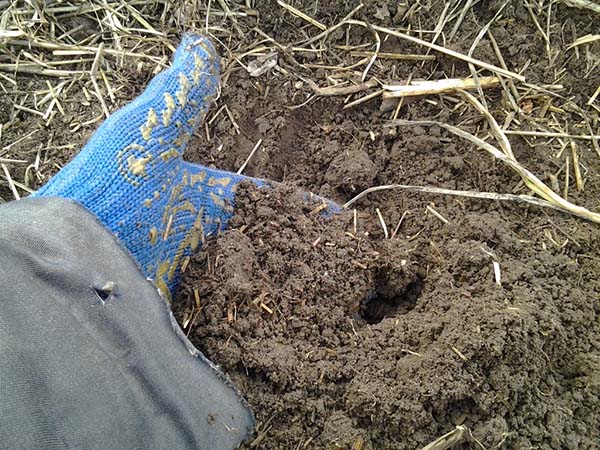
Siderata stimulate the development of beneficial soil organisms and improve the soil microflora, which is one of the main factors of soil fertility. So, mulch attracts the same worms and other microorganisms that process organic matter into humus.
As you know, over time, nutrients are washed out into the lower layers of the soil, which is why they become simply inaccessible to plants.
It is the sowing and plowing of siderates that allow move nutrients from the lower soil layers to the upper.
How it works?
Siderata build up their aboveground part (organic mass) due to their deep root system (i.e., they take food from the lower layer). Accordingly, after cutting, the tops decompose and enrich the topsoil with humus.
Also, green manure allows you to grow the same crop in one place by reducing the consequences of soil fatigue and restoring its fertility, in other words, due to green manure, correct crop rotation.
And one more advantage (useful effect) of growing green manure:
- some green manures (for example, winter rye) are capable of converting mineral substances inaccessible to plants or difficult to digest (namely, phosphates, i.e., phosphorus and potassium) into readily available and digestible forms, and also saturate the soil with nitrogen (leguminous green manures).
- winter siderates (rye, oats) are perfectly capable of trap snow and moisture in the springand also help protect young seedlings from spring return frosts (but preferably with additional cover).
Thus, in short, by planting green manure you can improve fertility and structure its soil due to its loosening (the soil will become light) and enrichment with humus, and get rid of weeds and pests (e.g. wireworms, nematodes, slugs).
By the way! The site has an article about how to get rid of weeds on the site, and how to deal with wireworm, bear, snails and slugs.
In other words, if you want to turn your stony (clay) soil into a more or less loose and fertile soil completely free of weeds, then green manure is your choice. However, this may take 1 or even 2-3 seasons (years).
By the way! Sowing green manure is one of the main components autumn preparation of the greenhouse for winter and spring preparation for planting seedlings.
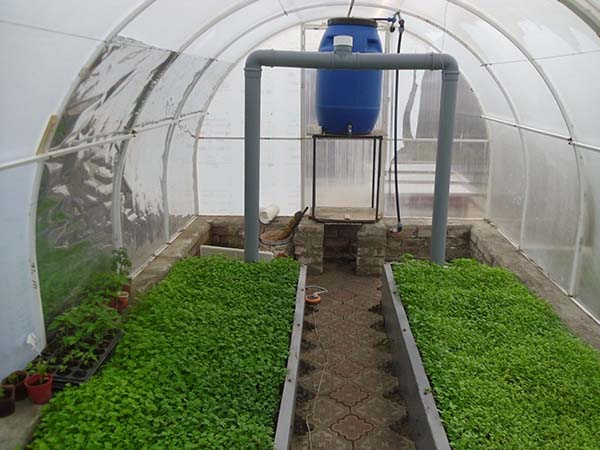
Video: why you need to sow siderates
What is the difference between the process of growing green manure and mulching
In general, green manure tops are the same organic mulch, only in this case you not only enrich the surface layer of soil with humus, but also improve the structure in the upper layer and at depth.
Interesting! According to many gardeners, green manure is more than a worthy substitute for manure (humus) and the best "green fertilizer".
In what cases it is undesirable to sow green manure
If the whitefly is a frequent visitor to your greenhouse, then sowing siderates can lead to the fact that they simply become a food base for an annoying pest, and you will have to find another way to restore and improve soil fertility.
By the way! About, how to deal with whitefly on tomatoes in a greenhouse, detailed in this material.
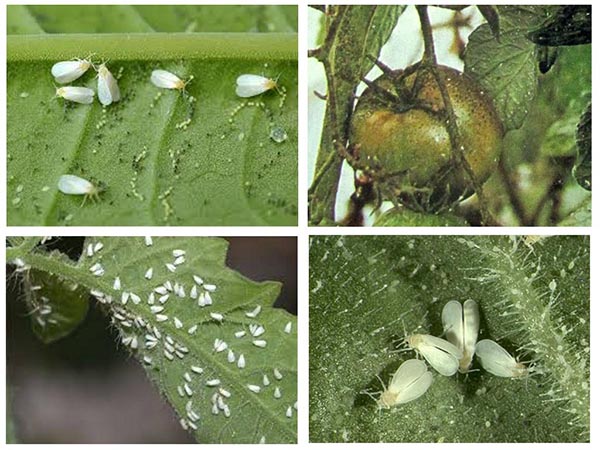
Planting rules for green manure in autumn, spring and summer
The technology for growing green manure is more than simple and uncomplicated: they sowed seeds, grew (did not forget to water), cut the tops. Then they removed it from the garden or left it as mulch. Then they slightly dug up the ground by 5-7 cm and sowed / planted a garden crop, harvested. And again they sowed green manure, but of a different species (family).
But when sowing green manure, several basic requirements should be taken into account:
- Must be observed crop rotation rules, namely, it is impossible to plant plants of the same family in a row on the same bed. For example, after and before planting cabbage, you should not sow rapeseed or mustard, because these are cruciferous plants, the same goes for legumes.
- Accordingly, before planting a crop of a certain family, it is recommended to plant the most suitable and most effective green manure for her (for example, in order to improve the soil after tomatoes and potatoes that suffered from late blight, it is optimal to sow mustard, oil radish, oats or buckwheat).
- From the above, it is quite obvious that siderates should also be changed or alternated (and not constantly plant one mustard), i.e. first plant mustard, then vetch, then oats or rye, phacelia. Better yet, plant mixtures of different families of green manure (a combination of vetch and oats will be very effective).
By changing or using green manure mixtures, various nutrients will accumulate in the soil.
However, various green manures differ in their germination rate and growth rate, therefore, as a rule, the strongest crop drowns out the development of the weaker one (the exception is a combination of vetch and oats).
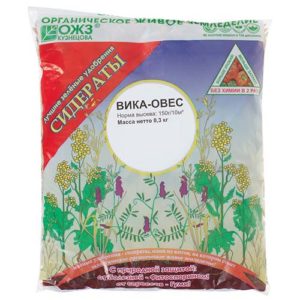
Important! Siderata need to be sown immediately after cleaning harvest mainstream culture. This is especially true for potatoes.
- The beds are pre moisten (if necessary, i.e. if the soil is dry), leveled with a rake, cutting furrows, in which they produce sowing, and then close up.
By the way! Some gardeners prefer to spill the beds with water after sowing and planting seeds in the soil.
- The seeds are sown as thick as possible on the surface or deepened by 2-4 cm (see the instructions on the packaging of a specific type or mixture of green manure).
Video: how to sow green manure in autumn, spring and summer
What are the varieties of siderates, for what purposes they can be sown
As a rule, phacelia, lupine, rye, oats, white mustard, oil radish, rapeseed, vetch, buckwheat and other plants (including tagetes or marigolds - work effectively against nematodes in the greenhouse).
Siderata can be divided into several groups (families):
- Legumes green manure (vetch, lupine, peanut peas, alfalfa, broad beans, clover, lentils, sweet clover) - enrich the soil with nitrogen (contain nitrogen-fixing bacteria on their roots), and also perfectly loosen, prevent the growth of weeds and cleanse the area from pests (especially lupine is effective against wireworms and beetle larvae).
Suitable for sowing and improving all types of soil (from light sandy to heavy clay).
After legumes, it is good to plant tomatoes, peppers, eggplants, potatoes (nightshades), cucumbers, pumpkins (pumpkin seeds), cabbage, radishes, radishes, daikon (cruciferous), but in no case not the legumes themselves (peas, beans, soy).
- Cereals (oats, rye, barley, annual ryegrass) - saturate the soil with nitrogen, make potassium and phosphorus more available, loosen, drain, structure the soil, increase air and moisture capacity, help get rid of weeds and pests (the same nematode), contribute to the prevention of fungal diseases.
Can be planted on all types of soil.
After cereal siderates, it is ideal to plant tomatoes, peppers, eggplants, potatoes (nightshade), cucumbers, zucchini, pumpkins (pumpkin).
- Cruciferous (white mustard, rapeseed, oil radish, rape) - enrich the soil with potassium and phosphorus (make phosphates more easily digestible), loosen, suppress weeds, help get rid of pests (wireworms, nematodes, slugs), inhibit phytophthora and root rot.
Not suitable for planting in acidic soils.
After cruciferous green manure it is recommended to plant tomatoes, peppers, eggplants, potatoes (nightshade), cucumbers, zucchini, pumpkin (pumpkin), carrots, beets (root vegetables), parsley, dill (herbs).
Cannot be planted (violation of crop rotation rules) cabbage, radish, turnips, daikon, watercress, i.e. cruciferous crops.
- Borage or hydrophilic (phacelia) - reduce soil acidity, help get rid of weeds, pathogenic bacteria, scare away pests (wireworm, nematode).
Phacelia is an excellent predecessor for all crops.
- Buckwheat (buckwheat) - reduce soil acidity, saturate with phosphorus and potassium, suppress weeds, rid the soil of root rot, are especially effective on heavy soils.
After buckwheat, you can plant any crops, except for sour ones, i.e. sorrel, spinach, rhubarb.
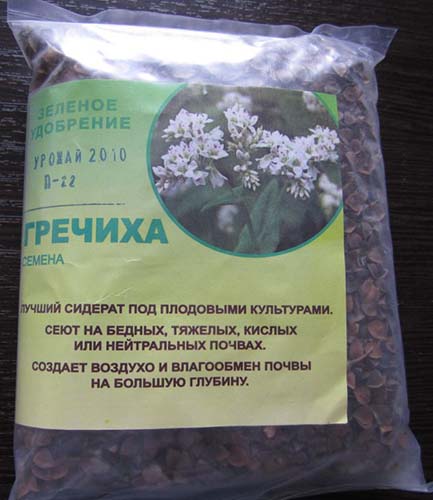
By the way! As you can see, all green manures effectively loosen the soil and suppress the growth of weeds.
More details about the best and most popular siderates read for the garden in this article.
Video: the best green manure - organic fertilizers for environmentally friendly crops
When to sow green manure in autumn, spring and summer
Siderata can and should be sown during the entire gardening season - in early spring, summer, autumn and before winter.
And not only in the fall, although most summer residents are used to sowing after harvest, and not before or together with vegetable crops.
- In autumn (before winter)... After harvesting the main crops, green manures are sown throughout the site to restore soil fertility. The most promising during this period to sow winter varieties of green manure, for example, the same rye or oats, which go under the snow and grow in spring (in the fall they form a root system, and in the spring the green mass is already growing). Lupine, vetch, oilseed radish, phacelia, buckwheat and mustard are also suitable for autumn sowing..
As for the specific dates for the autumn sowing of green manure, the best month is September-early October.
- Of course, the siderates are planted and in the spring... So, they are sown at least 3 weeks before planting the main crops. Moreover, the seedlings can be planted directly in the green manure without mowing them first. In this case, green manure will be able to protect young plants from frost, but subject to additional cover with the same spanbond. And after the return frosts have passed, they will need to be mowed and removed from the garden or left as mulch.
Advice! In order for the earth to warm up better, it is better to remove the mowed tops, and then, after 1-2 weeks, return them to the beds.
- Summer (for cooler regions) orin late summer-autumn (for warm regions)... In this case, instead of the main crop, you sow only green manure, because pursue the goal of deeply restoring the fertility of your soil. Alternatively, in 1 season, you can completely restore the soil in your garden by first planting phacelia (in May), then vetch (in June), oil radish (in July), white mustard (in August) and - winter rye or oats ( in September-October, before winter).
By the way! You can sow fast-growing green manures (the same peas, mustard) in late summer-early autumnso that they have time to build up the above-ground mass (green tops), and you mow them before the onset of frost.
Video: when to sow green manure in autumn, spring and summer
How and when to mow green manure in autumn and spring
So, as a rule, after the siderates grow and reach a height of 30-40 cm, they are mowed at ground level, for example, with a hoe or a flat cutter, or perhaps with a trimmer.
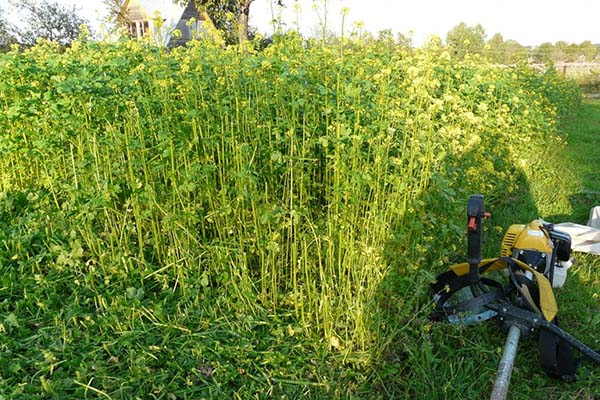
Interesting! Many people advise mowing green manure (especially alfalfa) required before the seeds appear on themso that they do not scatter over the site on their own and do not themselves turn into weeds.
However, it is in autumn, green manures often do not mow, and left in the garden, letting them go under the snow. And in the spring you get an excellent organic mass (mulch), with which you will be free to do one of the following ways.
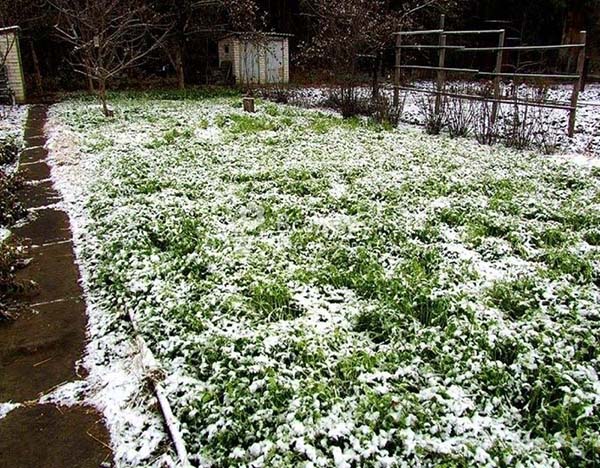
Obviously, winter crops such as rye and oats are planted in autumn so that they will emerge in spring. Above we are talking about other cultures.
Further, you can how to bury (or better to soil) the mown green manure tops in the ground - this is first way, and leave it on top, i.e. on the surface of the earth (like mulch) - second way.
By the way! You can also throw the mowed tops onto the compost heap or mulch other beds.
However, it must be borne in mind that these 2 methods have completely different goals:
- If you bury the tops, then after decomposition and decay, it (green manure tops) directly improves soil fertility, more precisely formed humus in the upper layer of the soil, and also increases the content of nitrogen, phosphorus and potassium (depending on the specific type of green manure).
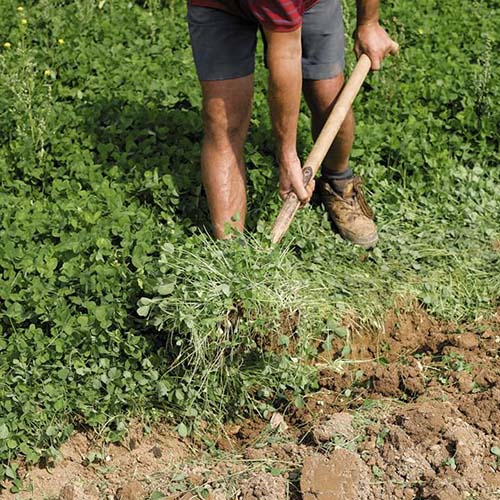
- If you leave on the surface, then it will be kind of mulchingthanks to which you can stop weed growth, better trap and retain moisture in the soil, and protect soil from erosion (i.e. from washing out and weathering of nutrients).
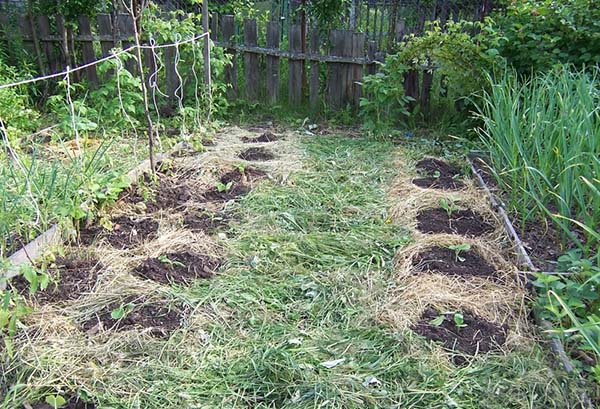
However! It is believed that in no case you can't dig deep into the soil after growing siderates on it. The fact is that by digging you will simply destroy the porous structure of the soil, which will lead to the mineralization of humus, in other words, you will deprive the whole process of sideration of the meaning.
Much more desirable slightly loosen the ground by 5-7 cm, but not with a shovel, but with a hoe or cultivator, i.e. carry out the process of loosening, and not turning over, as when digging.
Well, now you clearly understand what purpose you are pursuing when sowing certain green manure crops in autumn, summer and spring. There is no doubt that green manure is an excellent organic "green fertilizer" that will naturally improve the fertility of your soil.
Video: what you need to know about siderates

